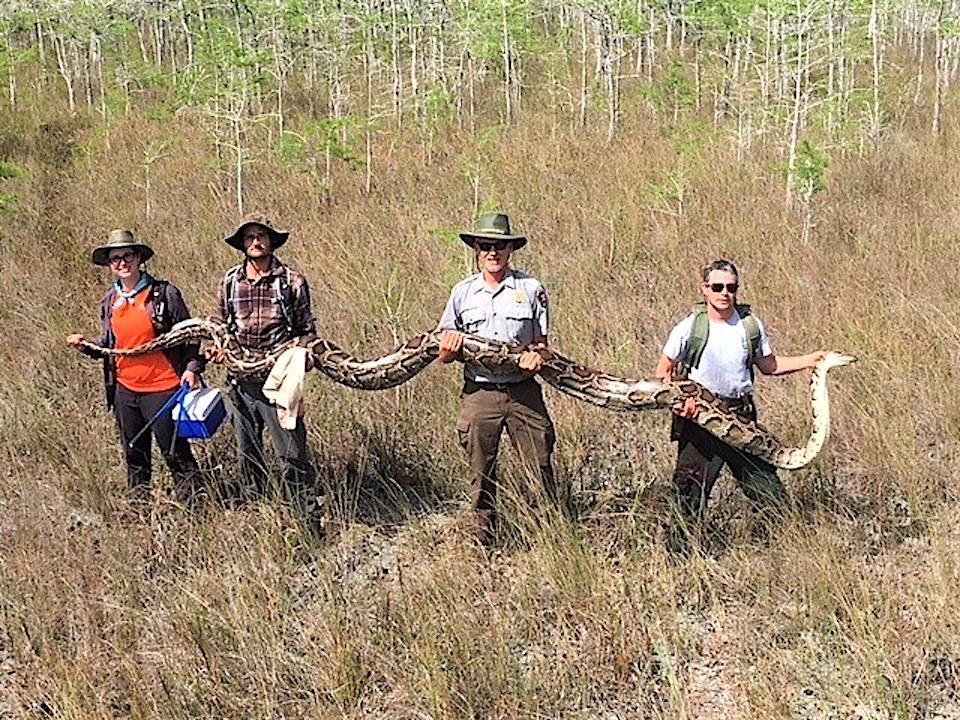
This 17-foot python was captured in Big Cypress National Preserve/NPS
You could serve a lot of "Everglades Pizza" with the 17-foot-python pulled out of Big Cypress National Preserve in Florida. Or whip up an awful lot of snake egg omelets.
The female python captured in Big Cypress last week weighed 140 pounds and contained 73 "developing" eggs, according to a post on the preserve's Facebook page.
"She is the largest python ever removed from Big Cypress National Preserve -- and she was caught because of research and a new approach to finding pythons," the park staff reported.
She basically was done in by her suitors. Researchers have been fitting male pythons with radio transmitters that allows them to be tracked to breeding females. Once the females and males are found, the team removes the snakes "and collects data for research, to develop new removal tools, and to learn how the pythons are using the preserve."
All of the python work at Big Cypress is focused on controlling this invasive species, which poses significant threats to native wildlife.
As for the pizza?
Some years ago a pizza parlor in Naples, Florida, offered the "Everglades Pizza," which was promoted as containing frog legs, gator meat, and ground python. However, Everglades National Park officials warned folks not to order the pies without first checking where the python came from, as the big snakes slithering through Everglades were found to be incredibly high in mercury.
Back in 2009, Everglades biologists sent samples from two dozen python tails for testing in the USGS Mercury Research Laboratory in Wisconsin. Testing revealed that the tissue samples had a mean mercury concentration of 5.5 parts per million, "which is about three times greater than concentrations in tail tissues of the American alligator," the USGS reported.
Native to Southeast Asia and first found in the Everglades in 1979, the Burmese python is one of the deadliest and most competitive predators in South Florida. With no known natural predator, population estimates for the python range from the thousands to hundreds of thousands.
The constricting python is a potent predator, a quick-growing mass of muscle that is a threat to anything that moves in the Everglades. Its reach is far and its appetite large, with scientists telling us that populations of small mammals -- raccoons, opossums, even bobcats -- are being wiped out of some parts of the national park by these slithering predators. But its prey also can be much, much larger.



Comments
Did they kill it?
According to Wasthington Post they euthenize captured pythons because they are an invasive species and shelters are already overwelmed with the species.
I've read that in some areas of the Everglades, Burmese pythons have wiped out 95 percent of the mammals. They eat any kind of mammals, even deer. They are killing machines and they don't belong there. Hopefully their numbers can be controlled, but it's probably impossible to eradicate them completely.
I am just curious. What part of the Reserve was this snake found. I was there two weeks ago driving around the Reserve and although I found a Eastern Diamondback rattlesnake, I did not see many birds or other animals.